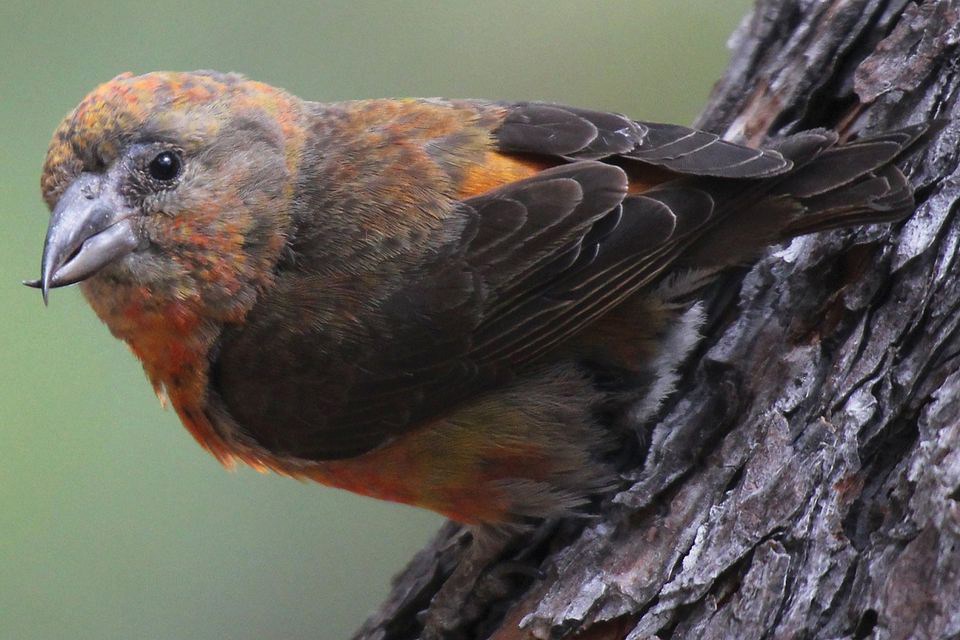January continued the warm, wet weather that has prevailed all of this winter. As a result, the birdlife of the Sunshine Coast has remained very mundane with few notable observations. In some winters, if the Arctic front drops down, it brings with it visitors from the boreal forest such as Bohemian waxwings and common redpolls. This winter, of course, has been dominated by the fall irruption of pine siskins, which were present in phenomenal numbers back in November. The number of siskins has declined since then, as they dispersed to who-knows-where, but still remains high.
Perhaps part of the same movement, red crossbills have been common this winter, when normally they are present in our area in the summer. Hiding within the flocks of red crossbills have been a few white-winged crossbills. The males of this species are an attractive pink bird with large white wing patches, but as the crossbill flocks tend to feed high in the crowns of tall trees it makes observation and identification difficult. White-winged crossbills are normally a spruce-specialist species and we do not have much spruce on the Sunshine Coast.
Robins have been present in better than normal numbers for mid-winter, likely a response to the ongoing mild temperatures. When we reach February, robins are already migrating back into our area, in advance of the torrent of thousands that arrive in early March. In case you need a pick-up in this pandemic-scarred winter, remember that in only 4-6 weeks the first swallows, yellow-rumped warblers and rufous humming birds will start to appear. Even in February, particularly on warm, sunny days, you may hear the first bird song of the year.
On the Salish Sea, the good winter for long-tailed ducks continued with a high count of 16 at Bjerre Shoal on the 15th and the same day there were high counts of 690 ancient murrelets, 175 common murres and 500 western grebes off the south end of Nelson Island.
Predictably, the high number of pine siskins has led to outbreaks of salmonellosis at bird feeders, including on the Sunshine Coast. Sick birds are indicated by lethargy and fluffed-up feathers. Current advice from high-level sources is to quit all bird feeding at the present time. Good hygiene with bird feeders is always important and especially right now. Disinfecting with a bleach solution is recommended before you resume feeding. There is much information online regarding this. To report your sightings or questions contact [email protected] or 604-885-5539. Good Birding.



